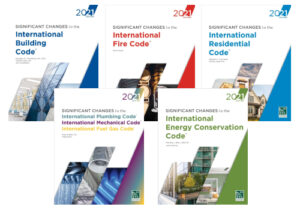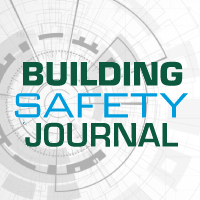
Significant changes to fire wall use for control areas in the 2021 International Building Code
![]() An addition to Section 414.2.3 (Fire Wall Use for Control Areas) in the 2021 International Building Code states that the scoping limitations of a fire wall’s use to create separate buildings have been expanded through a new allowance for the number of control areas permitted.
An addition to Section 414.2.3 (Fire Wall Use for Control Areas) in the 2021 International Building Code states that the scoping limitations of a fire wall’s use to create separate buildings have been expanded through a new allowance for the number of control areas permitted.
Occupancy classifications of buildings containing hazardous materials are based on the maximum allowable quantities (MAQs) concept. As established in IBC Tables 307.1(1) and 307.1(2), the maximum amounts are identified for the various hazardous materials based on a variety of conditions. Where the MAQs are exceeded, the uses are to be classified as Group H occupancies. In those cases where the amounts do not exceed the MAQs, a classification other than Group H that best represents the building’s use is assigned. It is often quite desirable to the designer that an occupancy classification of other than Group H be assigned due to the restrictive nature of the code when it regulates high-hazard uses. A fundamental method of maintaining a non-Group H condition is the creation of control areas.
Control areas are portions of a building that contain hazardous materials in amounts that do not exceed the MAQs and that are separated from other areas containing hazardous materials by fire-resistant construction. Any combination of hazardous materials, up to the MAQs, is permitted in a control area. The intent is that each control area is regulated for MAQs rather than the building as a whole, thereby increasing the amounts of hazardous materials that can be present without triggering a Group H classification. However, there is a limit to the number of control areas that can be created in a building as set forth in Table 414.2.2. For example, in a single-story building no more than four control areas can be provided. Therefore, a Group H classification will be mandated where the quantities of hazardous materials require the creation of more than four control areas. The use of one or more fire walls to create separate buildings is now applicable to the control area concept, allowing the permissible number of control areas to be increased. Where a structure is divided into separate buildings through the use of complying fire walls, each such separate building may now contain the maximum number of control areas permitted by Table 414.2.2.
The primary purpose of fire walls as regulated by Section 706 is to create separate buildings under one roof, providing an opportunity for the designer to regulate each of these buildings independently rather than as the entire structure. This highly regulated fire-resistance-rated vertical separation provides the necessary independence so that the portion of the structure on each side of the fire wall can be regulated individually. However, the application of the separate building concept is very limited. Section 503.1 mandates that a fire wall only creates separate buildings for the purposes of determining area limitations, height limitations and type of construction. This very short list, which reflects the scoping limitations of a fire wall’s use to create separate buildings, has been expanded through a new allowance applicable to the limitation on the number of control areas permitted. As a result, an increased amount of hazardous materials may now be present without classification as a Group H occupancy where fire walls divide a structure into separate buildings.
Read the full significant change.
![]()
 The 2021 Significant Changes guides are available for the International Building, Fire, Residential, Energy Conservation, Plumbing, Mechanical and Fuel Gas Codes. This valuable series can help any code user save time by zeroing in on the most critical changes in the 2021 International Codes. The Code Council’s technical experts provide summaries, analysis and graphics for these changes making them clear and easy to understand. Each edition provides a comprehensive analysis of significant changes since the 2018 edition, offering key insights into its contents and implications. Each change analysis features the affected code sections and identifies the change with strikethroughs and underlines to show modifications to the existing language. Each change is accompanied by a quick summary, detailed illustrations, and a discussion of its significance, which brings the technical jargon of the code to life in a real-world setting.
The 2021 Significant Changes guides are available for the International Building, Fire, Residential, Energy Conservation, Plumbing, Mechanical and Fuel Gas Codes. This valuable series can help any code user save time by zeroing in on the most critical changes in the 2021 International Codes. The Code Council’s technical experts provide summaries, analysis and graphics for these changes making them clear and easy to understand. Each edition provides a comprehensive analysis of significant changes since the 2018 edition, offering key insights into its contents and implications. Each change analysis features the affected code sections and identifies the change with strikethroughs and underlines to show modifications to the existing language. Each change is accompanied by a quick summary, detailed illustrations, and a discussion of its significance, which brings the technical jargon of the code to life in a real-world setting.
Significant Changes to the International Building Code, 2021 Edition is available in the ICC Store or through Digital Codes Premium.





